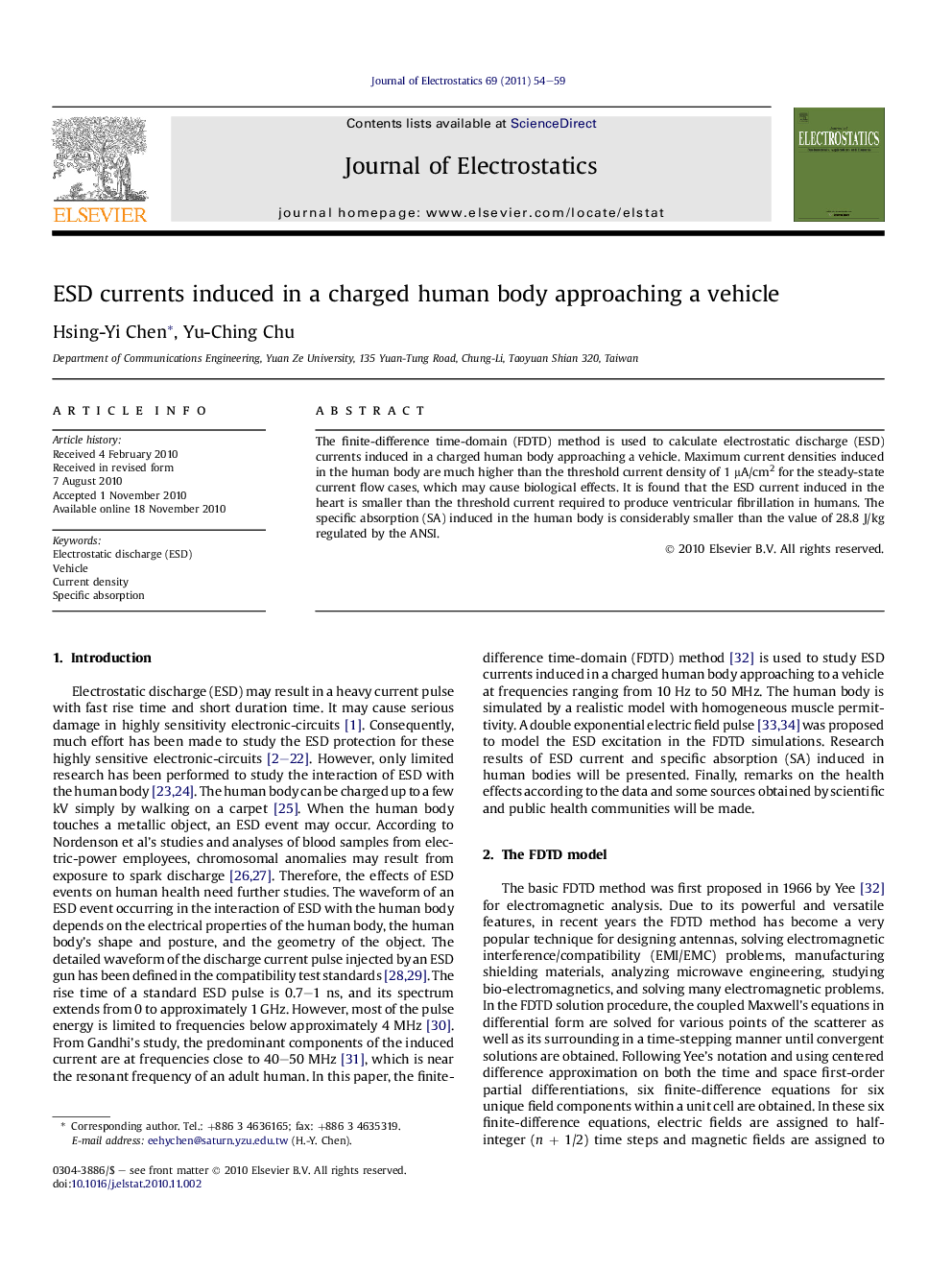| Article ID | Journal | Published Year | Pages | File Type |
|---|---|---|---|---|
| 725480 | Journal of Electrostatics | 2011 | 6 Pages |
Abstract
The finite-difference time-domain (FDTD) method is used to calculate electrostatic discharge (ESD) currents induced in a charged human body approaching a vehicle. Maximum current densities induced in the human body are much higher than the threshold current density of 1 μA/cm2 for the steady-state current flow cases, which may cause biological effects. It is found that the ESD current induced in the heart is smaller than the threshold current required to produce ventricular fibrillation in humans. The specific absorption (SA) induced in the human body is considerably smaller than the value of 28.8 J/kg regulated by the ANSI.
Related Topics
Physical Sciences and Engineering
Engineering
Electrical and Electronic Engineering
Authors
Hsing-Yi Chen, Yu-Ching Chu,
